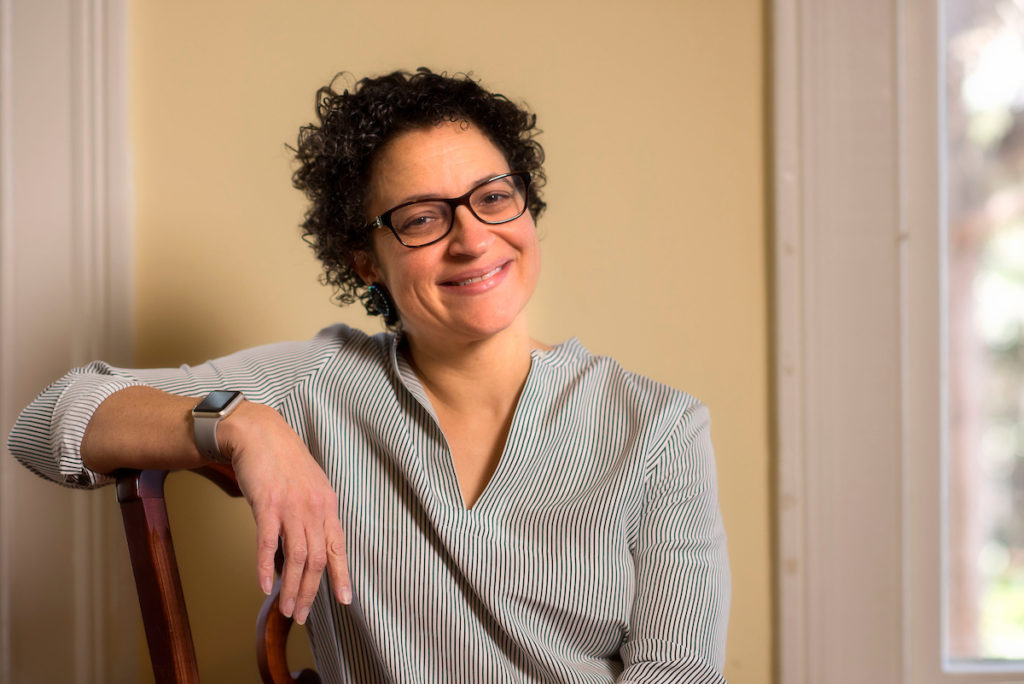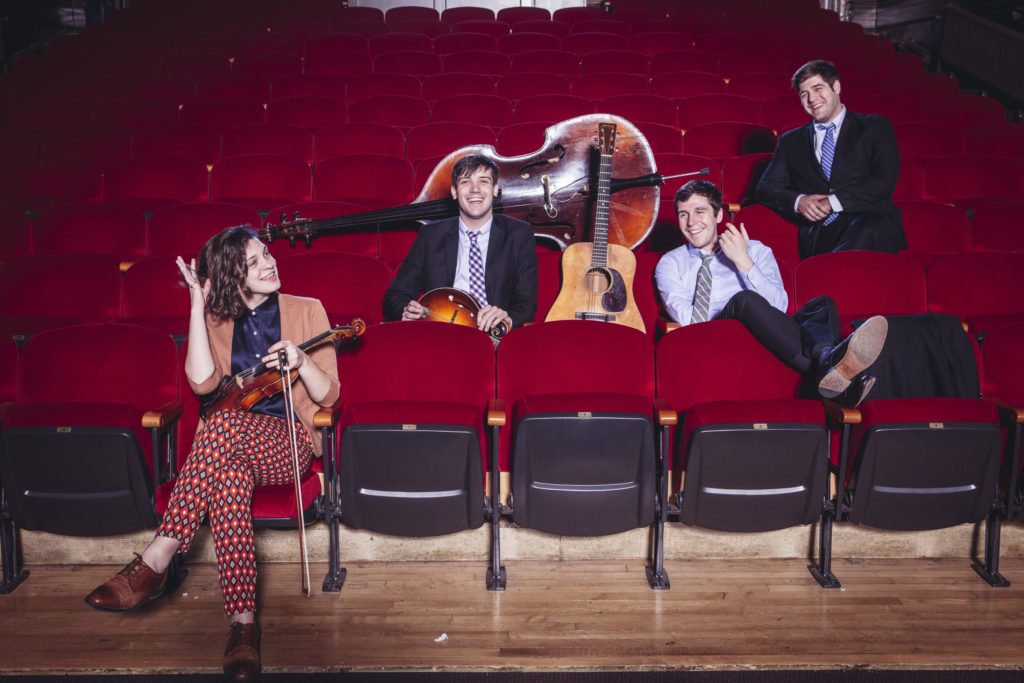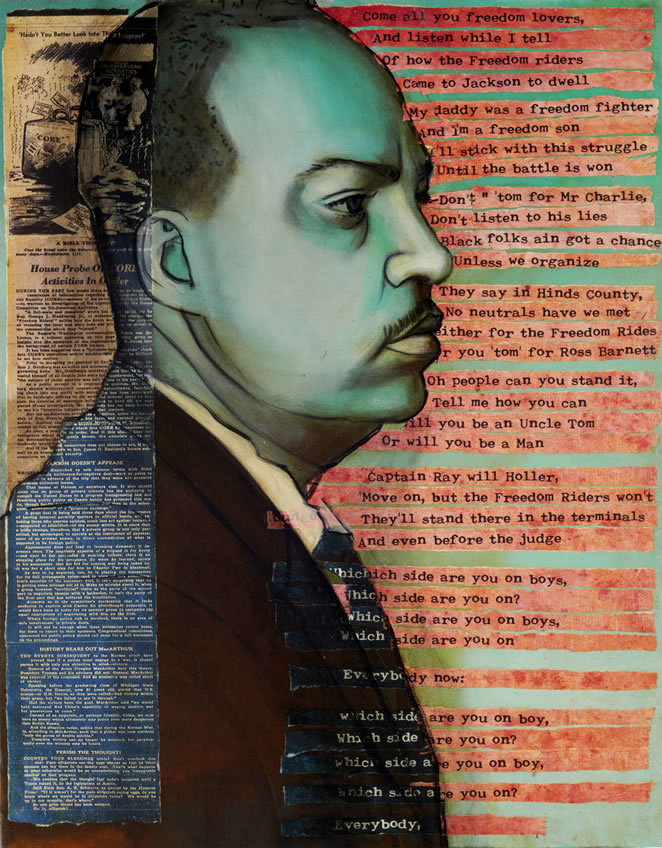Update: Brett Riggs and his archaeology team of faculty and graduate and undergraduate students wrapped up their dig at President Tom Ross’ house on Aug. 29. The team had been granted additional time to survey the site, and dug deep enough to reach what was once the original basement floor of the Second President’s House. Since our original story was written, the excavations have yielded additional artifacts, including pieces of a cast iron stove, door hinges, a boot scrape and an old lock, which Riggs believes is original to the house. The lock dates to when Joseph Caldwell resided there in the early 19th century. Upon concluding the dig, the archaeologists backfilled the excavation.
Carolina faculty and students often head to far-flung locations to do archaeological field work, but this week, they are unearthing a big piece of the past in their own backyard.
On Monday, a construction crew was preparing to re-surface the driveway of UNC System President Tom Ross’ house on Franklin Street. The driveway curves between his house and the Love House and Hutchins Forum, home of the Center for the Study of the American South. Crew members found what they suspected were historical artifacts in the construction debris, so they contacted archaeologists Brett Riggs and Stephen Davis from the 75-year-old Research Laboratories of Archaeology in UNC’s College of Arts and Sciences.
After an initial review of the site, a crew of faculty, graduate and undergraduate students from archaeology, anthropology, religious studies and classics quickly mobilized and began digging on Wednesday.

Archaeologists soon uncovered remnants of what is referred to as “the Second President’s House” in historical accounts of the University. That house was occupied by UNC’s first president, Joseph Caldwell, when he was elected president for the second time in 1816 until his death in 1835. It was also the home of President David Swain from 1849 to 1868. The house was then occupied by several UNC faculty members, including Thomas Hume, who moved in on Christmas Eve 1886. That night, a devastating fire started in an adjacent outbuilding and quickly destroyed the president’s house.
The archaeologists believe they have unearthed the house’s original foundation.
The house foundation lines are 24 feet apart, and Riggs said that description coincides with details of the house that Caldwell reported in a Feb. 9, 1812, letter to his brother. (In 2004, UNC archaeologists excavated a well house and filled-in well in the Love House yard, and Riggs said the debris found there matches the kind of material they have found this week. Riggs and colleagues write about the well house excavations in this report.)
“We have also uncovered nails; broken glass, pottery and chinaware; and plaster from the house walls,” Riggs said as the hot sun beat down Thursday morning on a group of graduate students and faculty digging with spades. “What was left here is what wouldn’t burn in a raging inferno. Some of the structural nails look perfect because when nails burn at a very high temperature they don’t rust.”
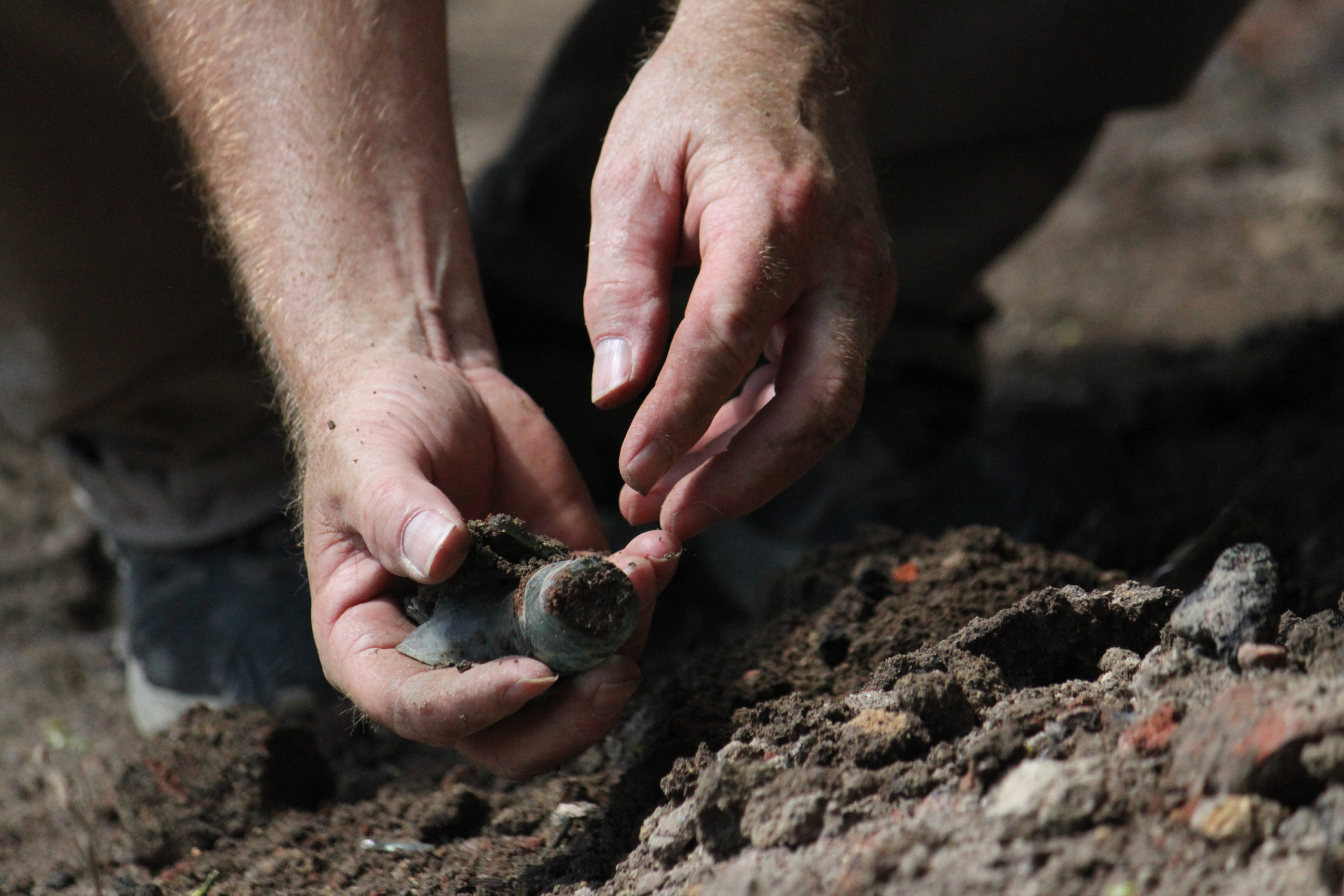
Riggs said artifacts found at the house date from 1812 to 1886. They will be collected, analyzed and become a part of the Research Laboratories of Archaeology’s North Carolina Archaeological Collection, the largest and most important archaeological archive in the state. Researchers are trying to quickly document what they find so that the current driveway construction project can continue.
Anthropology graduate students Mary Beth Fitts of Long Island, N.Y., and David Cranford of Wake Forest, N.C., said being able to participate in fieldwork is an important part of their education, and doing that on the UNC campus is an added bonus.
“This is a continuation of an interest I have in campus history. In 2011, there were excavations at Battle, Vance and Pettigrew halls, and I helped to excavate there and write up that research,” Fitts said. “This is a period of time when the University was growing hand in hand with the town.”
Cranford taught his first course at UNC last spring, and one of the things he did was take students on an archaeological tour of campus.
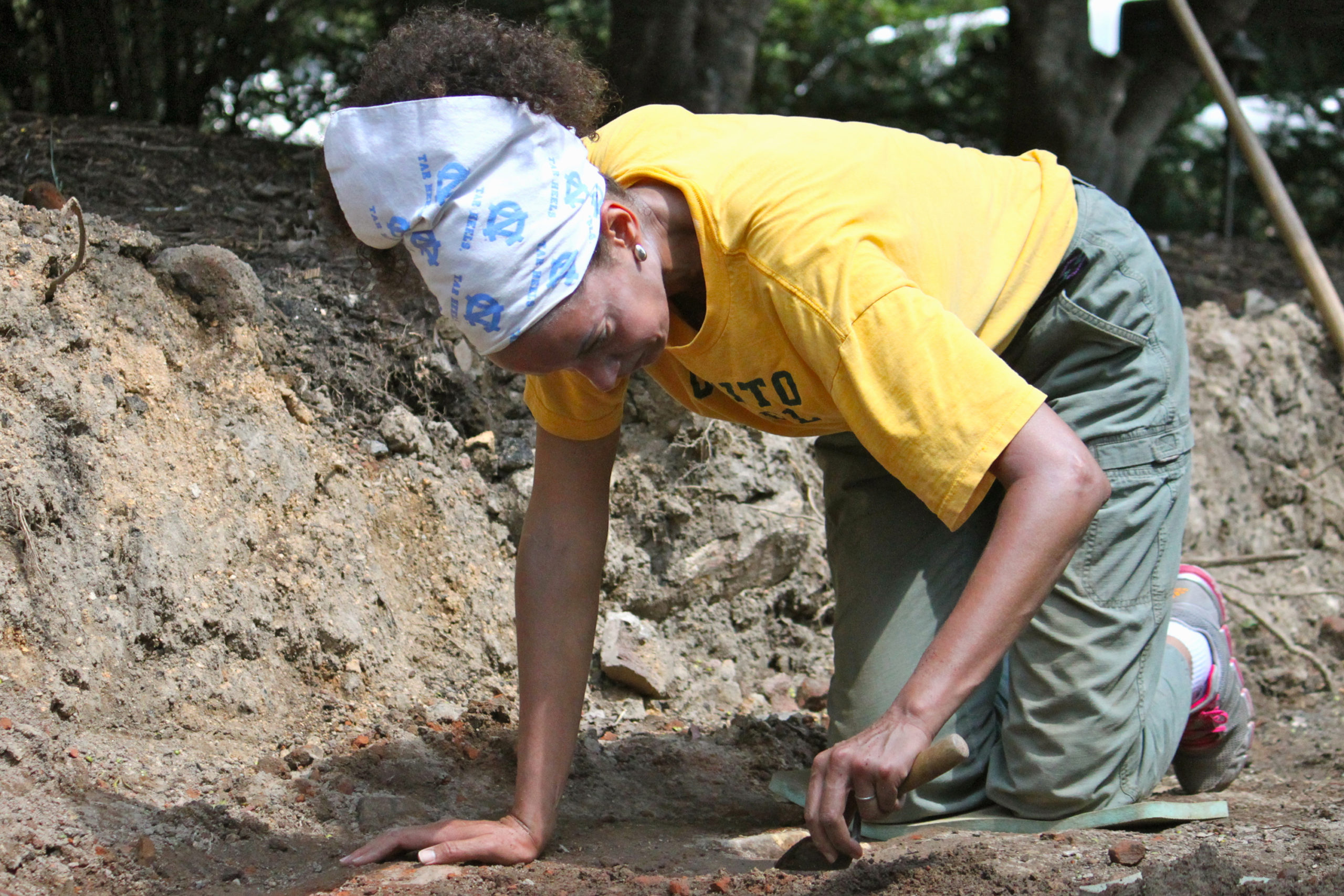
“The students got a kick out of walking around and realizing that there are archaeological features right underneath their feet. When they were doing the prep work for President Ross’ driveway, this was an incidental find,” he said. “A lot of times you go out looking for sites, but sometimes the sites find you.”
Vin Steponaitis, director of the Research Laboratories of Archaeology and chair of the curriculum in archaeology, has also been out at the site this week, immersed in the excitement of the discovery.
“This excavation provides a wonderful opportunity to enhance our knowledge of UNC’s early history and also to train our students,” he said.
UNC assistant professor of anthropology Anna Agbe-Davies is a former staff archaeologist for the Colonial Williamsburg Foundation. Her research interests focus on the plantation societies of the colonial southeastern United States and the Caribbean.
She spent much of her summer behind a computer writing about her own research, so she said it’s been great to get out and do fieldwork again this week.
“I want to feel like the archaeology that I do connects me to the place that I live, and that I’m really immersed in the society that I’m learning about,” Agbe-Davies said. “This has been a reinvigorating experience for me. It’s important to document this site now before it gets covered over again.”
Story by Kim Weaver Spurr ’88, video and photos by Kristen Chavez ’13


